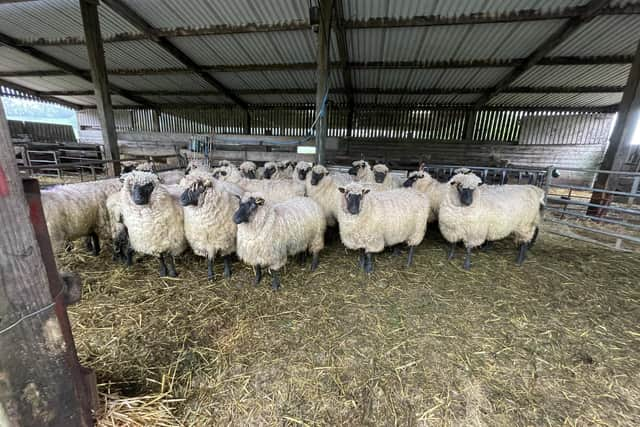Watch: Historic Gawdy Hall introduces rare breed Llanwenog sheep to estate
and live on Freeview channel 276
The breed, which is on the Rare Breeds Survival Trust watch list, will roam the estate’s many acres of historic parkland, permanent pasture, rotational herbal leys and over winter cover crops.
Llanwenog sheep originated in Wales and are known for their black legs and black faces with tufts of wool on their foreheads. They are a hardy breed with medium-length high-quality wool and a placid temperament.
Advertisement
Advertisement
The number of pure bred Llanwenog sheep has been declining in recent years - there were estimated to be fewer than 3,000 registered breeding ewes in 2015.


They were developed in the 19th century from the now extinct Llanllwni, the Shropshire, Welsh Mountain and Clun Forest breeds.
Gawdy Hall Estate’s land agent, Mark Mayhew, commented: “We’re delighted to have introduced a flock of 50 Llanwenog ewes to the Gawdy Hall Estate.
“Our sister estate Courteenhall in Northamptonshire is a supporter of the Rare Breeds Survival Trust, and the aim is for these sheep to be joined by another 300 native rare breed sheep over the coming months.”
Advertisement
Advertisement
Mark continued: “Gawdy Hall traditionally farmed sheep and this is the first time in nearly 50 years that we have our own sheep back on our parkland and in the arable rotation.


“They will lamb outside and be looked after by our very own sheep guru Ben Coe, who has been involved with the grazing here for 25 years.
“Ben currently runs a 400-head commercial flock of his own with native breeds of Jacobs, Romney, Swaledales and North Country Cheviots, as well as an emerging flock of Bluefaced Leicester sheep on the estate with his partner Sarah.
“The new flock is part of our regenerative farming strategy and our long-term plan to improve organic matter in our soils. Our policy is to have no bare soil in our arable cropping over winter.
Advertisement
Advertisement
“As part of our Countryside Stewardship application we are looking at arable reversion to grassland on areas of lighter gradient soils at Gawdy Hall. We’re also planting hedges and squaring off fields with pollen and nectar rich wildflowers to encourage wild birds, bees and our small pockets of English partridge.


“We’re looking forward to watching our new sheep settle in here and welcoming their lambs next Spring. As numbers grow, they will form part of a flying flock that will be moved to Courteenhall to assist with grazing on their parkland and grassland too,” Mark added.
The Gawdy Hall Estate in Harleston, Norfolk, is a sister estate to Courteenhall Estate in South Northamptonshire, which has been in the Wake family since 1672.
Gawdy Hall, which dates back to the 16th century and was once visited by Queen Elizabeth I, includes over 1,500 acres of arable land, 117 acres of mature parkland and 79 acres of ancient woodland.
The Rare Breeds Survival Trust is a conservation charity which was founded in 1973 to preserve native breeds.